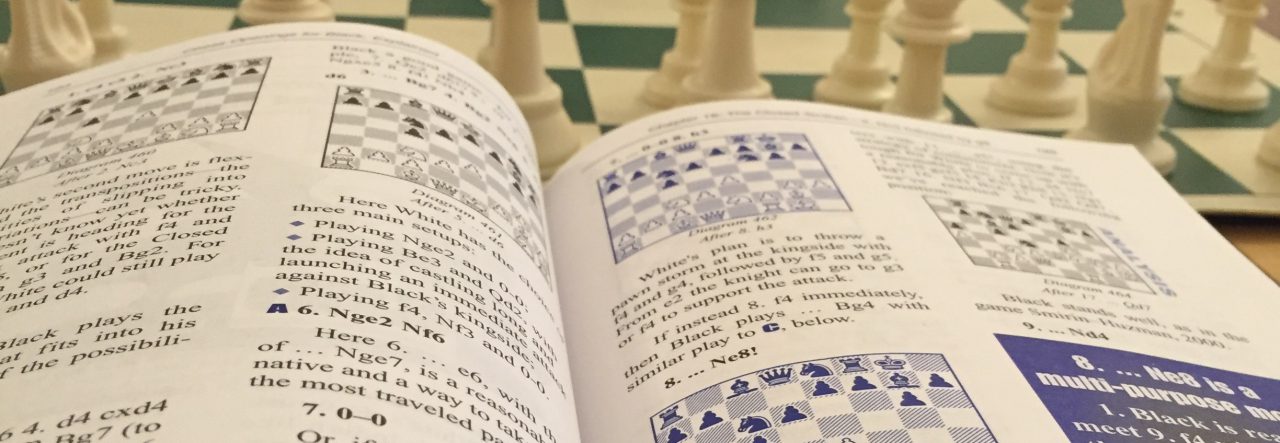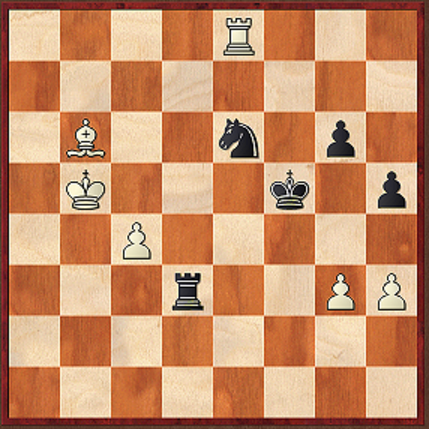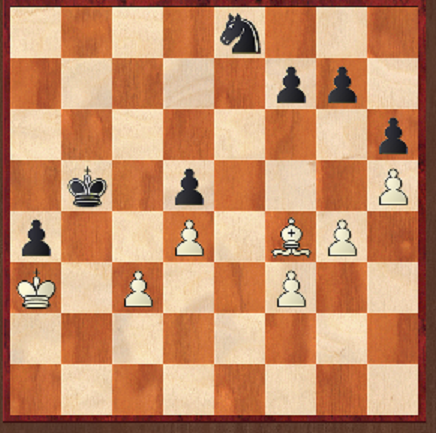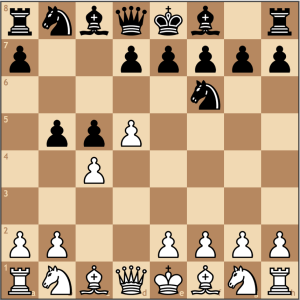When I first played at the US Amateur Team East in 2012, my team’s goal was to play in the big room. Just a round or two would be good enough. We did not succeed. Next year, the goal was to stay in the big room. As time went on, we wanted to get behind the ropes and stay there. This year, the goal was to win the mixed doubles prize. We failed in a way none of us had foreseen.
This is what the team lineup was this year:
 Left to right: Me, Aravind, Martha, and Dexin. Photo by Vanessa Sun
Left to right: Me, Aravind, Martha, and Dexin. Photo by Vanessa Sun
We Make the Best Team Names: Everybody Loves Them (2195.5 average)
Board 1: Me (2418 Jan. official/2450 pre-tournament)
Board 2: FM Aravind Kumar (2351/2342)
Board 3: WFM Martha Samadashvili (2165/2185)
Board 4: Dexin Li (1848/1880)
The drama began a few months before we made the first move. The USCF misrated an international tournament for a player of a similar name, awarding the points to Aravind. When the USCF made the January official rating list, Aravind’s rating was 26 points higher than it should have been. This is the last thing you want when you are trying to find the best fourth board match while keeping the team average below 2200.
Fortunately, Aravind’s father contacted the USCF, and both USCF and Steve Doyle were happy to help. It all got sorted out.
Without further ado, off to the tournament!
Round 1: Black vs. Flag Me If You Can (Average 1879, board 10)
There were 9 boards behind the ropes, and we were playing on board 10. Just one board to go. And we were not the highest-ranked mixed doubles team. Really?? With a 2195.5 average?
This round wasn’t too interesting. We won 4-0. We outrated our opponents heavily on board 1-3, and Dexin managed to swindle her opponent on board 4.
Round 2: White vs. 64 Squares Academy (Average 1986, board 12)
This is where things got interesting. First of all, our opponents were also a mixed doubles team. Competition! We had rating edges on all boards, especially on boards 2 and 3. Martha won first with a pleasing finish.

White to play and finish black off in the most effective way! Here’s the solution.
Aravind then dismantled his opponent. We were up 2-0, Dexin was in a little trouble, but I was clearly winning. Match over, right? It wasn’t so easy. I proceeded to completely blow my winning position and having to fight not to lose. You’ll have to wait for my next article to see how I messed that up. Dexin lost. My opponent and I agreed to a draw around 1:30 a.m. Off to bed!
Oh well… things happen. Anyway, the team won 2.5-1.5.
Round 3: Black vs. Figler on the Roof (Average 2159, board 7)
Behind the ropes for the first time! This was a serious matchup. Out of my teammates, I had the biggest rating edge of 80 points.
On a sidenote, my dad won a Chess Informant book by playing “poker” with the serial number on one-dollar bills (his had four 8’s!).
When my opponent offered a draw on move 18, I was an itsy bit worse with small winning chances. I decided to take it, a decision I would feel somewhat guilty about in the hours of stress that ensued. When my game finished, Aravind already had a powerful advantage against Boris Privman which he later converted to victory. A critical moment from the game.

White to play. How to proceed? Here’s how the game ended.
Martha lost an unfortunate game to her opponent. I thought she had decent chances, but what I didn’t know was that she was playing with a fever. Her position went downhill quickly. The match was tied 1.5-1.5, and it was all on Dexin’s shoulders. She was a pawn down but had compensation. Her opponent was toying with repeating moves and then went for a winning attempt. Great. Not. Was a draw the best we could do?
The stress went on until about 6(!) hours into the game. Things kept looking bleak. When I went to check for the 501st time, I found that Dexin was completely winning!! She had found a miraculous breakthrough. In Dexin’s own words, “He was up a pawn early on and I remember thinking that if I lost this game, after losing round 2, I really would have let down our team. 😦 This probably motivated me to keep on pushing for opportunities.”
She won what turned out to be the most important nail-biting game of the entire match and most likely the entire tournament. 2.5-1.5!!!! We pulled it off.
Round 4: White vs. Putin Gave Us Our King (Average 2175, board 6)
We only moved up by one board?!?!
Another tight matchup. Dexin and Aravind had decent rating edges, but they had black. Martha had a slight rating disadvantage and fever, and I had an even smaller rating disadvantage against GM Fedorowicz.
Looking around, I saw we weren’t alone in the mixed doubles competition. There were two other mixed doubles teams behind the ropes. Can you believe it?
GM Fedorowicz surprised me by offering a draw on move 18.

I could have just agreed to a draw and gone to watch Magnus Carlsen’s guest appearance in The Simpsons. However, the team situation didn’t look the rosiest, and I felt guilty enough about my 18 move draws earlier that day. Watch my position spiral downhill.
Yeah, I have no idea how I managed to draw that. I was busted on so many occasions it wasn’t even funny. Dexin drew, Aravind won, and Martha lost. The match was tied 2-2.
The team had 3.5/4. That was the best performance any of my teams had ever had after 4 rounds. If we played well the last day, we had excellent chances for a prize. Carissa Yip’s mixed doubles team was 4-0, but there was no other mixed doubles team with more than 3/4. Aravind was doing great; he was 4-0. Dexin was holding her own on board 4 and was the heroine of round 3. Martha wasn’t in the greatest shape with her fever, and I needed to get my act together.
Round 5: Black vs. Knight on the Rimsky-Korsakov (Average 2176, board 5)
We were playing on board 5. Moving up one board per round?
This looked like a rough pairing. First of all, I was outrated by 200 points and had black against GM Larry Christiansen. Board 4 was playing slightly up which looked like a tossup. The good news was that we had solid rating edges on boards 2 and 3, but anything could happen, especially considering that Martha was sick.
The first good news came when Dexin won on board 4. From a seemingly equal position, her opponent allowed Dexin a generous opportunity.

White to play. To trade or not to trade? Here’s what happened (it’s instructive).
On board 3, Martha was in trouble despite her rating edge. As for me…
That was a boost! That is my highest USCF rating win. We were up 2-0 and Aravind was winning. At the start, I thought the position was a bit strange, but it soon became clear that Aravind was boss there. See for yourselves.
Things got even better when Martha managed to swindle her opponent and win her game before Aravind finished. 4-0! Wow!! That was really unexpected.
Going into the last round, we were 4.5/5. Carissa’s team lost, and we were clear first in the mixed doubles standings! If we won, the mixed doubles title was ours and we were extremely likely to win an overall prize. Going into the last round, we were 3rd on tiebreaks. In the past couple of years, 5.5/6 has been enough to tie for first. Last year’s champions, the Summer Academy for Talented Youth, was the only team that was 5-0. I thought we might play them due to colors. We all rushed to prepare. Naturally, I was wrong.
Round 6: White vs. CKQ Arun’s Army (Average 2183, board 3)
Hey, 3 out of our 4 last board numbers were primes! That’s probably a good omen.
On boards 2 and 3, we had a big rating edge. Aravind was 5-0; he was in excellent form and had a lot of motivation to beat his opponent. Meanwhile, I was playing another 2600 USCF GM, and Dexin was playing a 2000. The basic plan was to win on boards 2 and 3 and survive on boards 1 and 4.
The big match to watch was on board 1: H.A.N.G. Loose vs. The Academy (abbreviation). Because the Academy was 5-0, I was really hoping they wouldn’t win, and we could tie for first. That match was a demolition. The Academy won 3.5-0.5. They won the match even before a single game in my match was done. Big congrats to the Academy for winning 6-0!
On board 2, Aravind was the first to win. I thought he was a little worse, but he took educated risks which paid off. 6-0! Monster! On board 3, Martha was grinding her opponent. At some point I honestly didn’t think it would be enough to win, but she pulled it off.
My game was a wild ride. I got a solid advantage out of the opening which I didn’t exploit in the best way. Things soon spiraled into complex dynamic equality.

Anything can happen here, but black has to be careful not to allow an invasion on the c-file. 31… Re4 would have probably held the balance, but instead GM Arun Prasad went 31… Rd5? letting me get a pawn up queen endgame after 32.Rc4! Qb7 33.Qc3 Rc5 34.Rxe3 Rxc4 35.Rxe6+ Kxe6 36.Qxc4+. Unfortunately, white is most likely not winning there. I tried some things which weren’t so successful. After Martha won, I decided not to do anything stupid and just repeat the moves.
I didn’t win this one, but oh well. The draw was enough for the team to win. Compensation for my luck in round 4. Dexin lost, and the team won 2.5-1.5. We finished with 5.5/6. Wow!
And this is how we lost the Mixed Doubles prize. Wait a second? Didn’t I just say that a win would give us a clear first in the mixed doubles category? Didn’t we just win? Yes and yes. Yet, we missed the prize. Why? Because we had too many points!
To our huge surprise, we ended 2nd overall. If it weren’t for the Academy going 6-0 we might have even tied for first. Since category prizes (with the exception of state awards) are awarded only to those who didn’t place among the top 5, the Mixed Doubles prize went to the next team.
As they say, you win some, you lose some. We lost our mixed doubles prize by winning the overall 2nd.
 Left to right: Me, Dexin, Martha, Aravind
Left to right: Me, Dexin, Martha, Aravind
Not only do we make the bestest team names (they’re great, don’t you agree?), we also make great teams. Aravind finished 6-0. Beast. Martha, NM as of yesterday (!!), wavered only on her fever day and won the rest. Dexin was a rare fourth-board find who saved us in round 3.
In conclusion, what did I gain from the weekend? 10 rating points, my highest USCF win, a new clock with a second place plaque, and a Chess Informant book.
 Bye bye Mr. Second Place Scholastic clock… you are getting replaced 🙂 Photo by Vanessa Sun
Bye bye Mr. Second Place Scholastic clock… you are getting replaced 🙂 Photo by Vanessa Sun
At the USATE, the prizes aren’t big, but the bragging rights are huge. But that’s not important. The USATE is all about spending the weekend playing on a team with friends and having fun. At that, the USATE is one of its kind. Big thank you to organizers (especially Steve Doyle), to my teammates, and everyone else who put the tournament together.













































